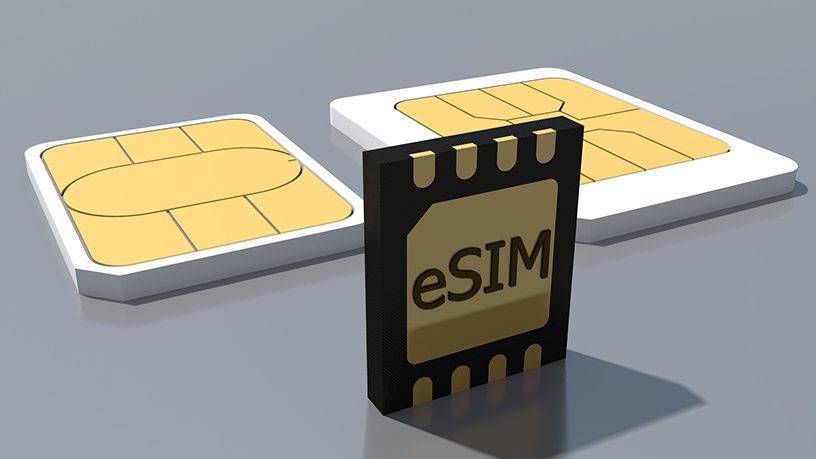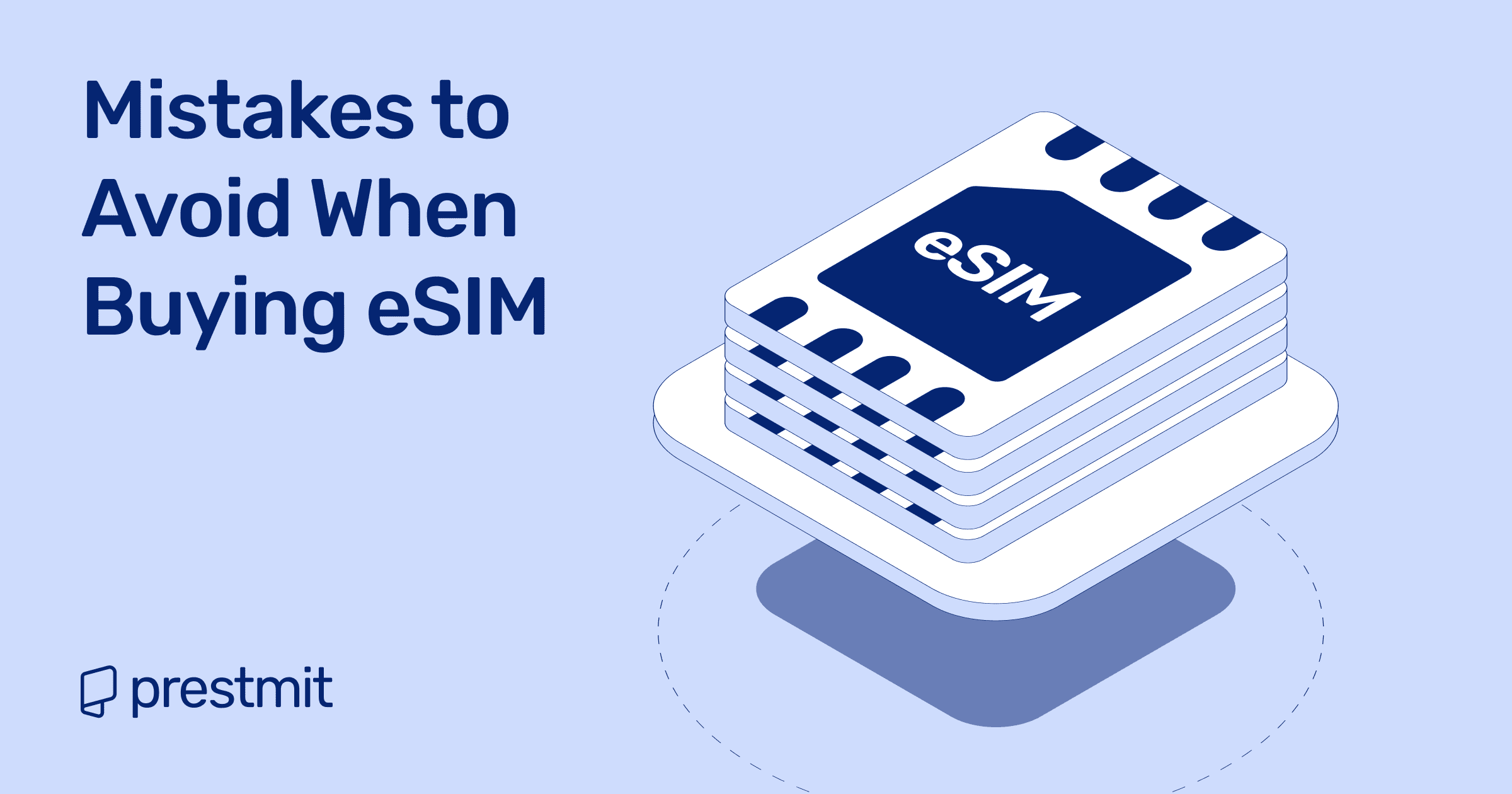Table of Contents
The invention of eSIM technology has revolutionized the way individuals stay connected while on the move, working, or residing overseas. While eSIMs differ from physical SIM cards, an eSIM lets you instantly activate mobile services without hardware. Due to its simplicity, most consumers make costly mistakes that result in poor network performance, financial waste, or reduced capability. Understanding these mistakes will spare you the trouble and give you the best value for your money.
This guide explains the five most common mistakes to avoid when buying an eSIM and provides tips for a smooth experience.
What Are the Common Mistakes to Avoid When Buying an eSIM?

1. Inability to Know Your Data Needs
The most critical mistake is underestimating or overestimating your data needs. Travelers buy the smallest data plans and run it out in the middle of the trip, and others pay for large packages that they do not get to use. To avoid this, think about your average data usage to choose the best data plan for you. Video calls, streaming, and navigation app usage consume more data than checking email or messaging app usage.
Operators mostly offer calculators to estimate your usage. Always verify your previous usage on your phone before selection. Efficient calculation avoids extra cost and provides trouble-free connectivity.
2. Selecting Providers with Subpar Network Partnerships
It is not every eSIM provider offers the same quality of coverage. Low-grade providers only get partnered with local carriers, who have poor signals in rural regions, whereas top-class providers get partnered with big networks for more stability.
Choosing a provider with poor partnerships can lead to a slow data speeds. Check the provider’s network partners list along with coverage maps before purchase. If you will be traveling across multiple regions, choose providers with extensive international partnerships. Solid networks have perfect browsing, navigation, and communication anywhere.
3. Not Including Discounts, Promotions, and Coupon Codes
The majority of customers forget to look for coupon codes and offers while purchasing an eSIM. Operators always have seasonal deals, referral benefits, or pack combinations available that can reduce the price significantly. Failing to use the discounts means paying extra for the same pack.
Check running offers on the website of the operator, newsletters, or good third-party websites. Some provide bonus data or longer validity without requiring anything additional to be paid. Saving the time to seek out discounts ensures you receive the best value without sacrificing the same quality service.
4. Not Checking Regional and Global Plan Opportunities
Another very widespread error is purchasing a country-specific eSIM when regional or global plans may be more flexible.
If you will be visiting multiple countries, a regional plan saves you the hassle of needing to switch operators each time you switch countries. Global eSIMs are even more handy, with several dozen countries supported by a single plan. A bit more expensive up front, they save time, avoid technical glitches, and offer hassle-free connectivity. Plan your travel itinerary ahead of time and choose the one that fits your level of mobility.
5. Not Looking for Hotspot Support
The majority of users assume that every eSIM plan supports hotspot, which is not always true. Others restrict tethering, meaning you can’t utilize data with another device such as a tablet or laptop. Failure to check for hotspot capability can be an issue in case you use multiple devices while traveling or working.
Always check your carrier’s policy to ensure that tethering is an option. If you require hotspot use, opt for plans that explicitly provide it. This protects against unwanted frustration.
What You Should Know Before You Buy an eSIM
1. Test Device Compatibility
Not every smartphone can support eSIM technology. While new iPhone, Samsung, and Google Pixel phones are likely built-in, some older devices might not be. Before you buy, ensure your device supports eSIM. You can check either through manufacturer specifications or phone settings. Buying an eSIM without verifying compatibility is a waste of money and time. If your device is not compatible, update or switch to a physical SIM until you are prepared to switch. Compatibility is the most important aspect of a good eSIM experience.
2. Identify Your Usage Type Before You Buy
Every user is different when it comes to mobile needs, and determining your use type ensures you get the right plan. Business travelers would adore unlimited data and good connectivity, and tourists may adore short-term, cheap eSIM plans. International students adore long-term flexibility less. Determining your profile makes the right one that prevents overpayment for undesired features. Spend some time considering whether you need heavy data, voice minutes, or roaming assistance before purchasing.
3. Choose the Correct Provider for Your Needs
The eSIM market has grown quite aggressively, and today various providers are offering various plans. Not all providers offer the same level of service. There are some who are best suited for international coverage, and others for low-cost local. Choosing any eSIM provider randomly can lead to poor network or hidden charges.
Research each provider’s reputation, customer ratings, and response to customer queries. A good provider ensures activation without hassle, reliable connections, and billing integrity. Choosing well saves money and enhances your experience.
4. Compare Plans & Costs the Smart Way
Price should not be the only factor for comparing eSIM plans. Most buyers incorrectly choose the cheapest plan without analyzing whether it is a good value. Don’t just look at price; rather, compare features such as data rollover, validity, hotspot support, and network strength.
A slightly higher cost plan with broader cover or additional benefits may be a better value in the long term. Compare on comparison websites or supplier websites to compare side by side. Smart comparison will allow you to get the best value depending on your needs.
What Are the Advanced Tips to Smooth eSIM Experience?
1. Make the Most of Dual SIM Features
Most smartphones have dual SIM capabilities, allowing simultaneous use of a physical SIM and an eSIM. This can be utilized for isolating work and home numbers or carrying a local eSIM for data and reserving the home SIM for calls. To avoid confusion, utilize descriptive labels and have a default line for data and calls. Dual SIM handling is convenient and cost-effective.
2. Monitor Data Usage
Monitor how much data you are using in case you receive an unexpected bill. Smartphones come with built-in utilities that track usage in real-time. Monitor these settings routinely and adjust your habits if you are near your limit. Data gets used quickly by apps such as streaming services and GPS navigation. Having warnings in place keeps you in command and prevents data shocks at the termination of your plan.
Although eSIMs are reliable, technical issues can occur. Never be left without a fallback, such as a physical SIM or an alternative eSIM from another provider. A backup will get you connected when your primary service is down. This is especially important for travelers who require internet access for maps and calling.
3. Be Aware of Validity and Time Limit
Every eSIM plan expires, usually in days or months. Forget these boundaries and you have interrupted services. Always inquire about plan duration and remember renewal time. If you’re a repeat traveler, opt for providers with roll-over extensions or auto-renewal. Awareness of validity saves you from surprise disconnection.
Frequently Asked Questions (FAQs) Mistakes to Avoid When Purchasing eSIM
How do I purchase an eSIM online?
You can buy an eSIM from the provider’s mobile app or website. You’re given a QR code or activation instructions when you buy it so that you can activate it right away.
Can you hack a phone using an eSIM?
eSIM technology is safe, and there are no real threats of hacking. However, you must always keep your device locked down with secure passwords and software updates.
How do I know if my eSIM is defective?
If you are having persistent drop calls or activation issues, visit your carrier. They can do diagnostics or send a replacement QR code.
Conclusion
Buying an eSIM is a smart and easy choice, but to get the best of eSIM services, you must avoid its traps and mistakes. With proper forecasting of data needs, selecting reliable providers, and providing essential features like hotspot support, you set yourself up for hassle-free connectivity. Use these precautions in paired top-tier advice and plan comparison with careful effort to gain maximum benefit and stay connected without a glitch.

